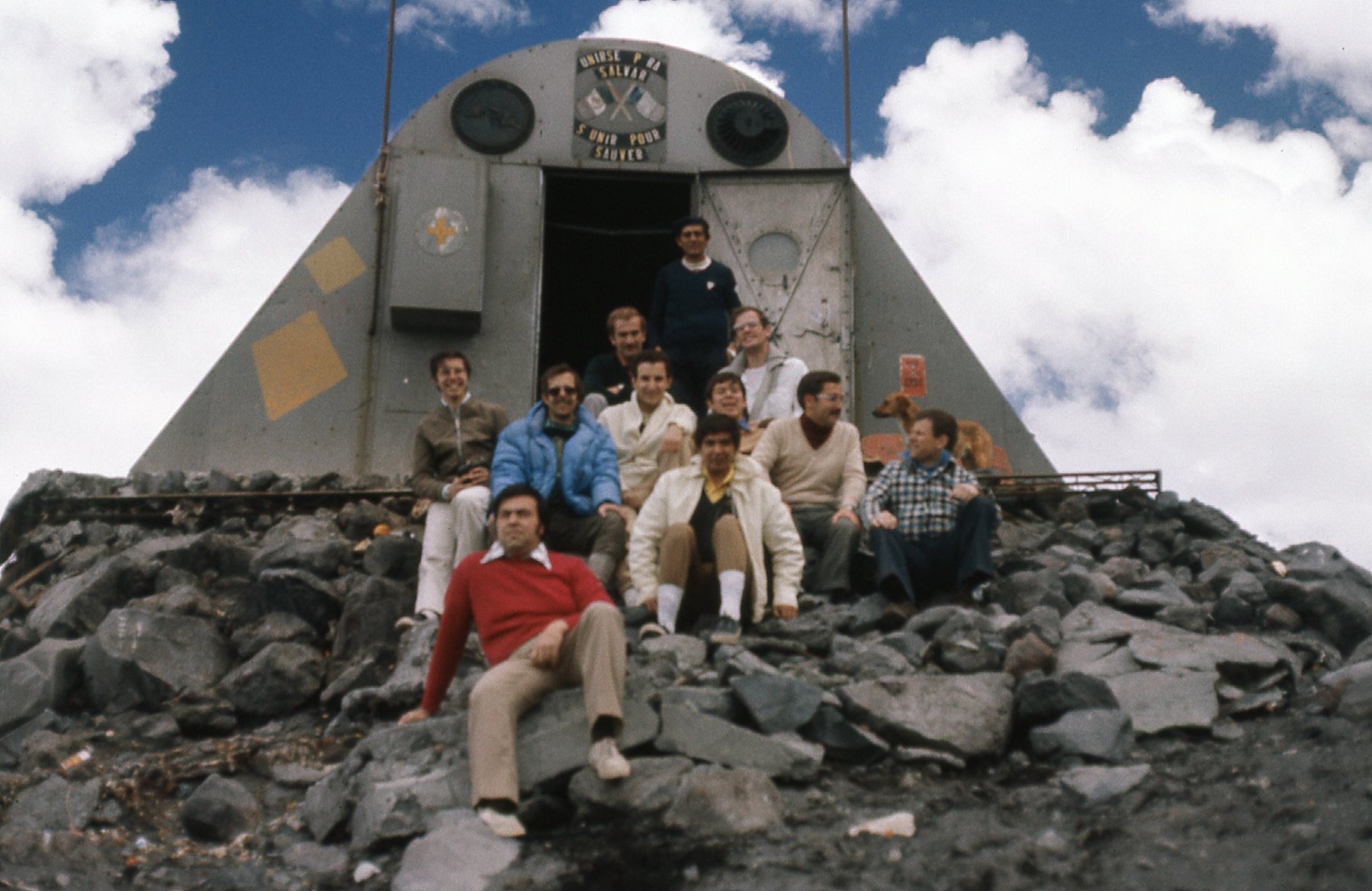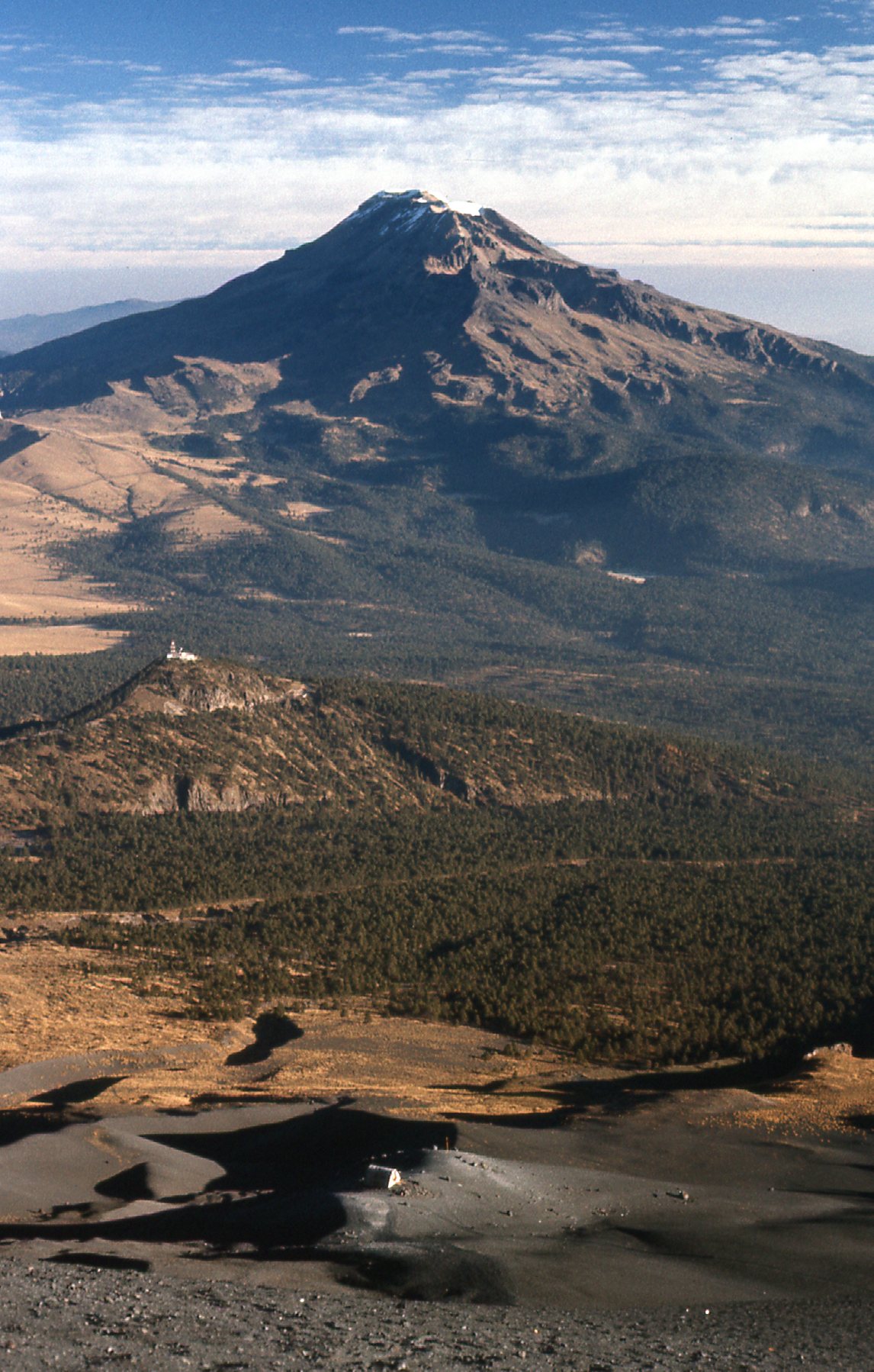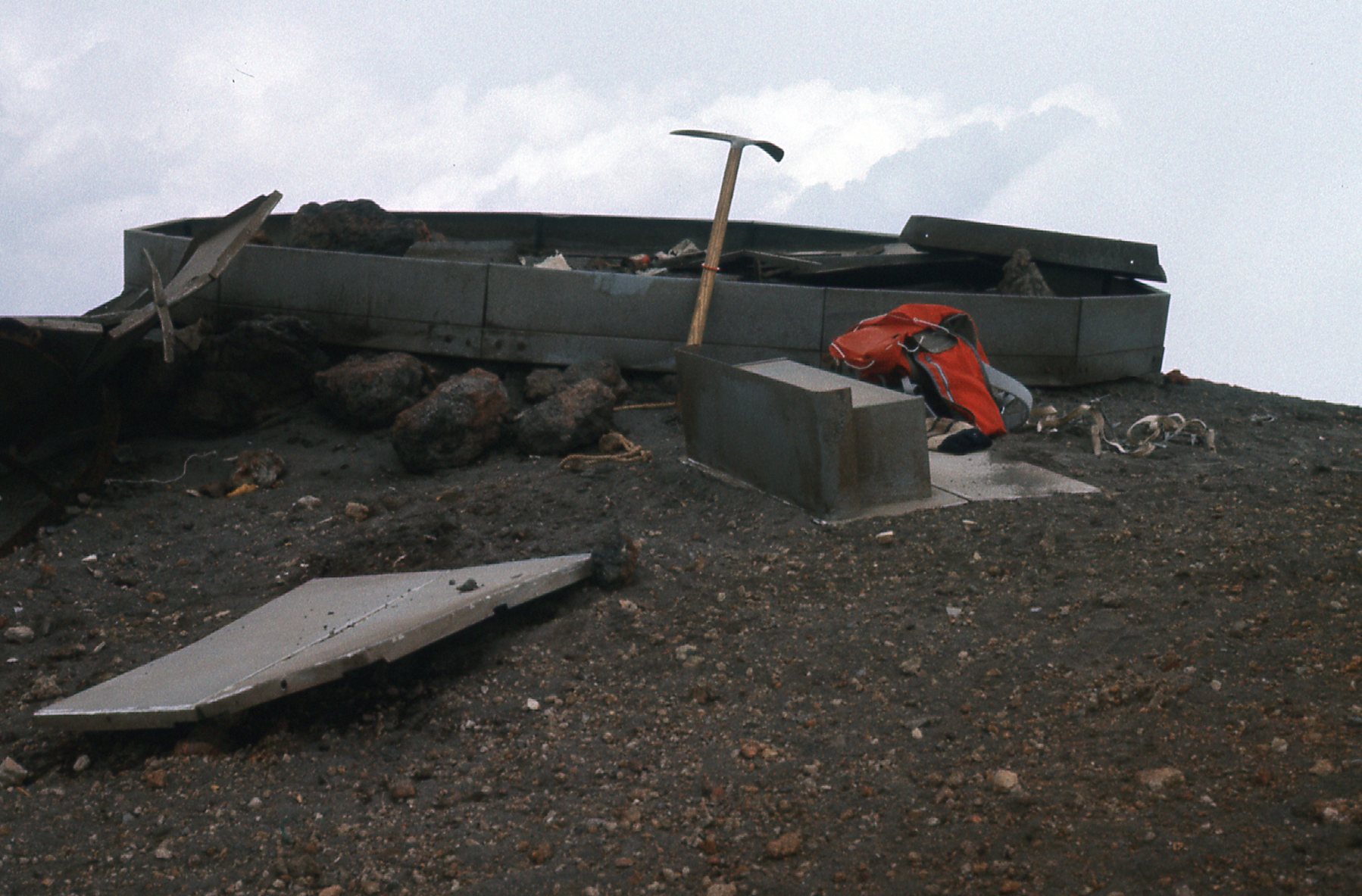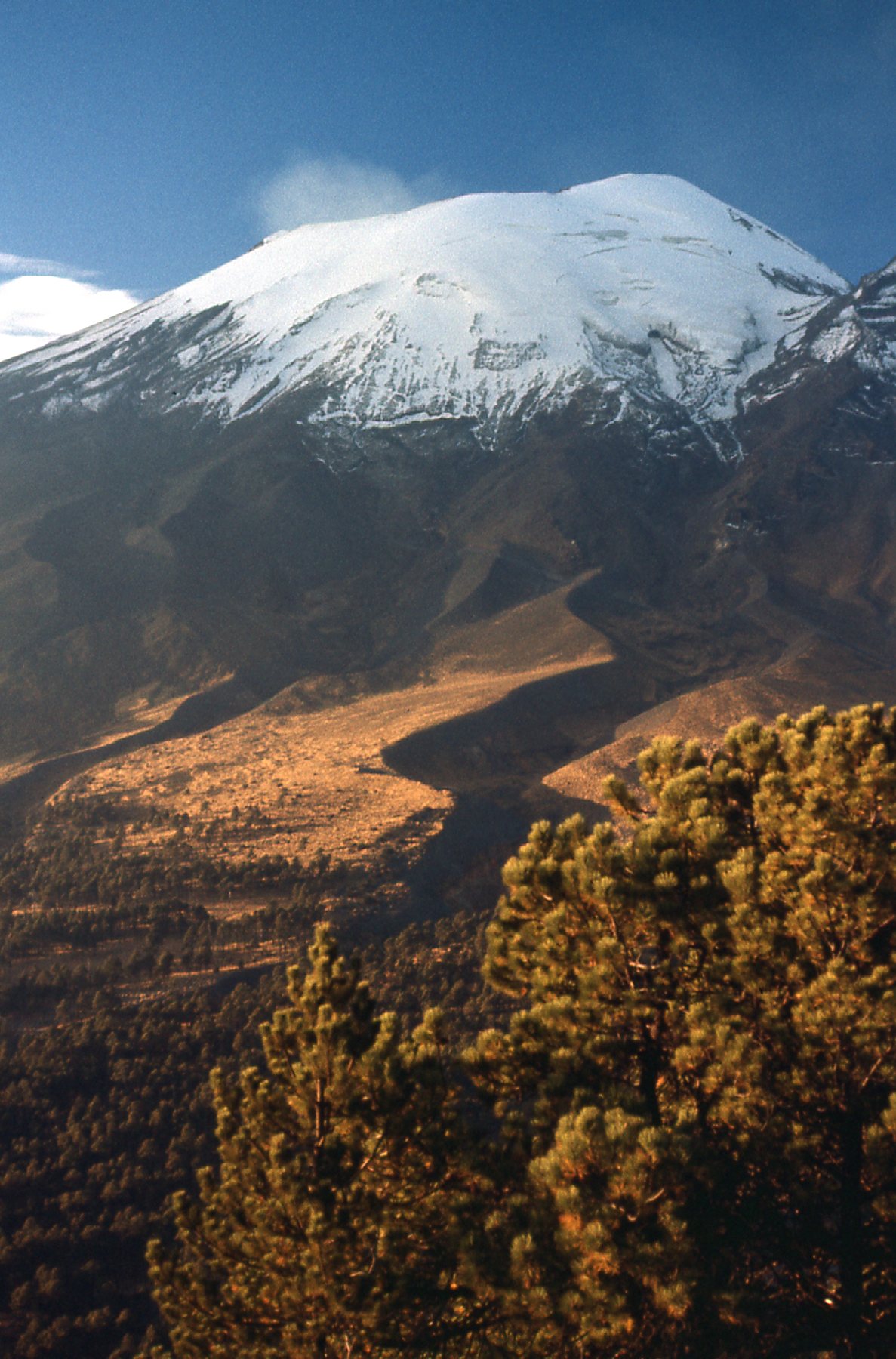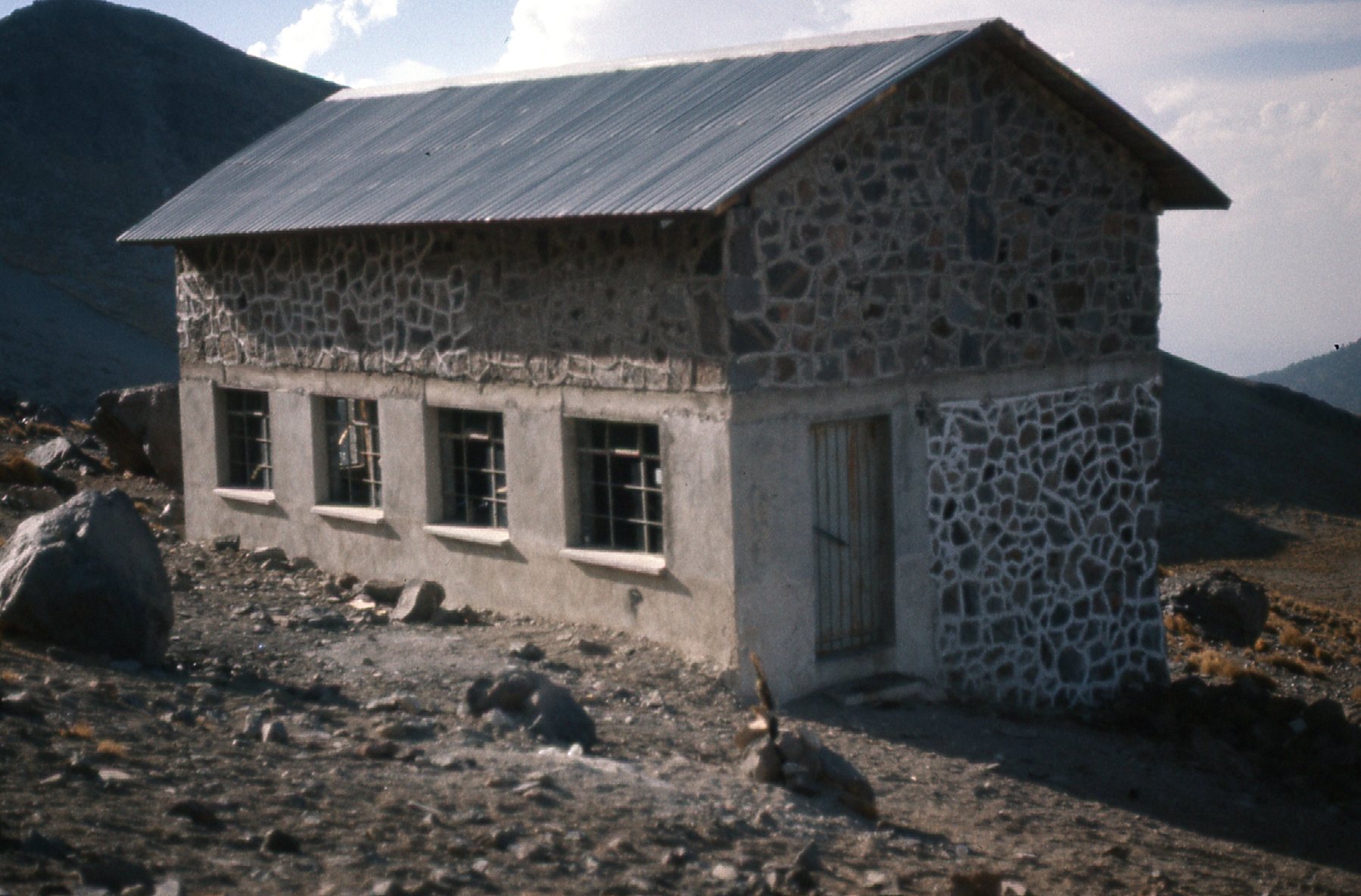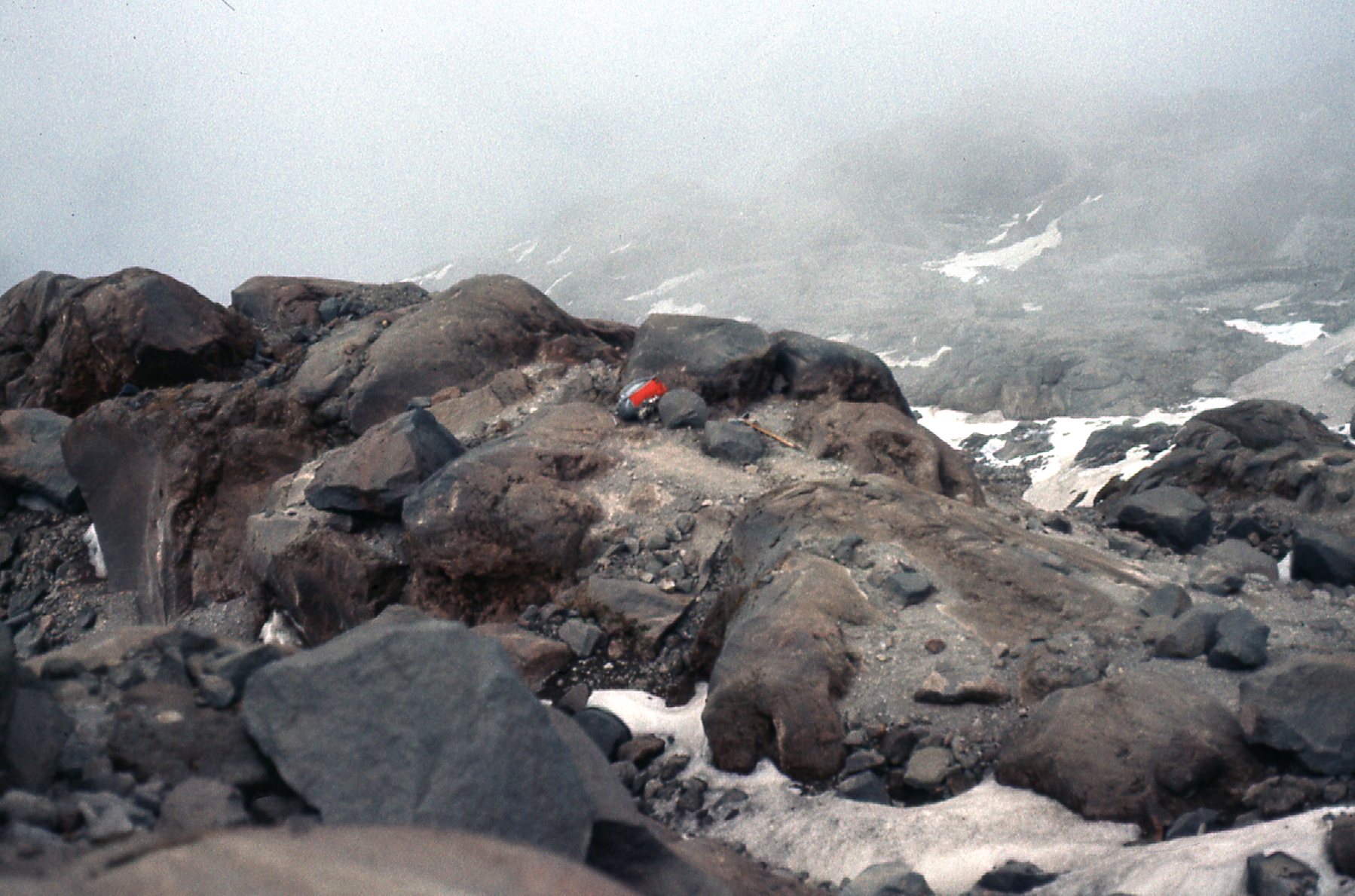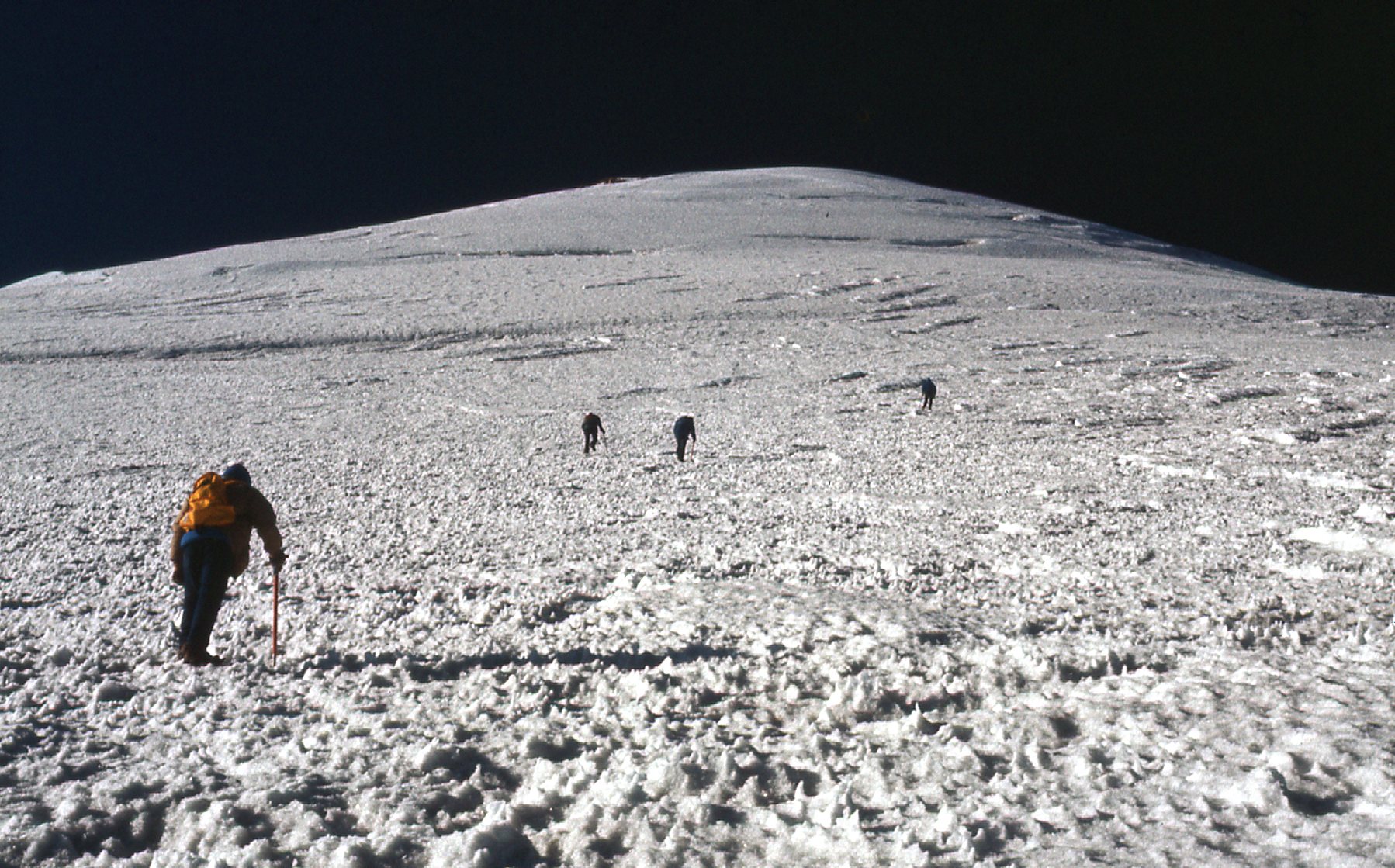I remember it well, the first peak I ever climbed. I was a high-school student, and one weekend I bushwhacked my way up a small no-name peak close to home. It was a climb of 1,400′ and put me on top at a whopping 2,200 feet above sea level. During the next few years, other nearby peaks didn’t get me much above 4,000 feet. It wasn’t until the summer of 1965, June 19th to be exact, when I first made my way above tree-line and all the way up to 8,330 feet on the shoulder of Avalanche Mountain. That was above Rogers Pass in the Selkirk Mountains of British Columbia.
Although I spent my summers in the mountains, it wasn’t until August 6th of 1967 when I finally got a bit higher, reaching 9,100 feet on Ambition Mountain in the Stikine region of northern BC. Once again, I didn’t make it all the way to the 9,688′ summit, but it was a good effort and an exciting day. Later the same year, my university room-mate and I managed to get to the 10,000-foot level on Mt. Baker. It was December 29th, certainly winter conditions, and once again it wasn’t a climb to the summit but a good effort for a couple of novices.
During the summer of 1970, my friend Dan and I made a 7-week-long road trip to Mexico in his Ford Falcon. On the way back, as we were cruising through Colorado and driving over a high pass, I decided to climb Grays Peak because we were so close. Standing at 14,278 feet, it was pretty easy because my start was so high, so that beat my previous high on Baker by a wide margin. That was on August 14th. Because we had been up high for several days, I didn’t feel any ill effects from the climb and for once, I made it to the top. I didn’t know at the time that Grays was the 10th-highest peak in Colorado.
How well I remember the first time I experienced altitude sickness (also known as mountain sickness or acute mountain sickness, or AMS). Anyone who has lived through it will also remember it. As you climb higher in altitude, the air pressure decreases and can cause fluid to leak from your blood vessels. Symptoms include nausea, light-headedness, headache, fatigue, loss of appetite, shortness of breath and sleep problems. If AMS worsens, it can lead to 2 types of mountain sickness that can be deadly.
The first is known as HAPE, or high-altitude pulmonary edema, where fluid builds up in your lungs. This prevents oxygen from moving around your body. Symptoms include: cyanosis, when your skin, nails or the whites of your eyes start to turn blue; confusion and irrational behavior; shortness of breath even while resting; tightness in the chest; extreme fatigue and weakness; feeling like you’re suffocating at night; persistent cough, bringing up white, watery fluid. The second is known as HACE, or high-altitude cerebral edema, where your brain tissue starts to swell from the leaking fluid. Symptoms include headache, loss of coordination, weakness, disorientation, memory loss, hallucination, psychotic behavior and even coma.
If a climber gains elevation slowly over a period of days, symptoms of AMS will usually disappear (and hopefully won’t appear at all). HAPE and HACE are more severe, however, and can lead to death, and the treatment for both is to go to a lower elevation as quickly as possible. Some climbers are afflicted by AMS even above 8,000 or 9,000 feet elevation, and there are plenty of examples of death even at 14,000 feet.
I guess the purpose of writing this piece is to not only discuss my personal journey of climbing to higher and higher peaks throughout my climbing career, but also to discuss the effects of AMS from a personal standpoint and how it has affected me and those with whom I’ve climbed.
There’s no predicting when mountain sickness might occur. On a September climb on Mount Rainier back in 1975, by the time I reached 12,000 feet I felt awful – splitting headache, vomiting – I had no choice but to turn back. A few thousand feet lower, I felt great. The same thing happened the first time I climbed Humphreys Peak (elevation 12,633′) in Arizona. I made the summit, but threw up on the way down and had a headache for hours.
In March of 1976, I flew to Mexico City, spent the night there at 7,300 feet, then drove directly to the Tlamacas Hut (12,950′) on the slope of Popocatepetl. I shouldered a full pack and joined a couple of Mexican climbers for a summit bid, but had barely left the parking lot before I started to feel terrible. It was soon apparent that I wasn’t going anywhere that day. The wide path that starts up the mountain was busy with entire families out for a stroll. As I lay there on the side of the path, vomiting and feeling like I wanted to die, an elderly lady stopped, patted me on the head, and said “Pobrecito”. I felt too sick to even be embarrassed. I stumbled back down to the parking lot and found a quiet spot in some nearby trees where I thought I’d camp for the night. I was still too high and too much affected by the altitude, as my resting pulse was 110. I felt somewhat better once I’d driven down to around 11,000 feet, where I spent a restless night.
The next day, I thought I’d give it another try, so I drove back up to the hut at the end of the road. Once again with full pack, I started up the trail, this time going at a snail’s pace and resting often. It took me over 4 hours to make it all the way to the Tres Cruces hut at 14,500 feet, a climb of only a thousand feet. In so doing, I realized that that was the highest I’d ever climbed. There were a bunch of other guys hanging around at the hut, just tourists from Mexico City out for a day’s exercise. They had no intention of climbing to the top. As you can see, they’re all dressed in street clothes. That’s me in the blue down jacket and knickers. Notice the sign above the open door. You can read it if you zoom in, but it says “Unirse Para Salvar” in Spanish and “S’unir Pour Sauver” in French, both of which translate as “Join Together To Save”. The proper name of this hut is the CeNeti hut, which is an acronym for “Centro Nacional de Enseñanca Técnica Industrial”. That is a school that designed, built and donated the hut to the Mexican mountain rescue group.
All those guys left soon after the picture was taken. I spent the night in the bare wooden hut, where I had the place to myself (if you don’t count the mice scurrying around). I felt nauseous and didn’t eat anything, but I did sip on water I’d brought. I slept better than the night before, but was still pretty restless. This was the highest night I’d ever spent. I was on the move early the next morning, determined to reach the top. This next photo was taken from 15,000 feet. The mountain in the distance is Iztaccihuatl, at 17,160 feet the 7th-highest peak in North America. The hut is the white thing surrounded by dark cinders at the bottom of the photo.
I was soon plodding up snow. There was no question I was suffering from AMS, as I was moving very slowly, had a whopper of a headache and still felt nauseous. It took me a full 7 1/2 hours to reach the summit. There I was, at 1:45 PM, atop Popocatepetl at an elevation of 17,802 feet. I think I surprised myself that I’d actually made it. It’s the 5th-highest peak of North America, and being there shattered my previous record of 14,278 feet on Grays Peak in Colorado set 6 years earlier. Have a look at this next photo. You’re seeing the remnants of a hut that had stood on the summit. The red thing is my day pack, and to the right of it sit my crampons with the white straps. I had taken them off, and during the hour I spent on top I went to re-attach them to my boots. It’s a simple task which would normally take 5 minutes. Another indication that I was suffering from mountain sickness was that I spent a full 45 minutes putting them on, totally spaced out. The summit was snow-free, the warmth of the ground keeping it bare (it is a volcano, after all)
It took me just over 2 hours to descend the 3,500 feet back to the hut. The nausea was still with me, but I did sleep better than the night before. In fact, the next morning I was awoken from my slumbers by 2 teams of climbers who had arrived to climb the peak. I soon packed up and was back at my car by 11:00 AM, and all the way back down to the nearby town of Amecameca at 8,300 feet elevation. My nausea and other symptoms of mountain sickness had completely vanished and I ate a huge lunch. Just goes to prove that symptoms can disappear quickly if you descend far enough. I was almost 10,000 vertical feet below the summit, so it was certainly enough to make a big difference. Here was a farewell look back at the mountain.
My goal in coming to Mexico was to climb peaks higher than I’d ever done before. There was only one more thing to do if I wanted to take the next step. Several hours of driving brought me to the town of Tlachichuca, in the shadow of my next peak. Sitting at 8,600′, it’s the perfect jumping-off point for the climb. Shortly after arriving, I met a group of 7 Americans who had just arrived in town. They had their own vehicle, so we all piled into it and attempted to drive to the mountain. We must’ve gotten off course, because after a few hours we gave up, returned to town, checked into a hotel and enjoyed a nice meal. I arranged for a truck capable of transporting all 8 of us plus our gear up the rough mountain road the next day.
We got an early start. The truck was bigger than a pickup, and had an open bed with rails around the sides. We were 5 men and 3 women, and 2 of the ladies rode up front in the cab with the driver. The truck crawled slowly up the rough road, and the driver stopped at a hamlet at 11,500 feet for a meal with his family. We impatiently waited for him, then continued the remainder of the 15-mile drive to the road’s end at 14,000 feet. He dropped us off at the Piedra Grande hut, a stone structure capable of sleeping 70 people. It turned out that we had the place to ourselves.
The 3 women were feeling really sick – nauseous, bad headaches, just plain rotten. They decided right then and there that there was no way they were going to try to climb the mountain. Instead, they would stay at the hut. The 4 men, however, were determined to get to the summit, no matter what. So let’s put things in perspective. All 7 of them had just come from the lowlands directly up to 14,000 feet, which is usually a sure-fire way to get AMS, and that’s exactly what happened to all of them – the 4 men fared no better. I’m sure they felt as crappy as did the women. I, on the other hand, had just paid my dues on Popocatepetl and was quite acclimatized to the elevation. In fact, I felt great.
The men told me that they had allowed so little time for their trip that they had one shot to climb the peak, that they’d have no second chance. When I heard that, I strongly urged that we move up the mountain to start from a higher spot for our summit bid. They agreed with the logic of doing that, but they felt so shitty that they wondered how they’d fare by spending the night even higher. It was quickly agreed that the women would stay at the hut while we guys would continue on up as far as we could with the remaining daylight. It took us a full 2 hours, but we made it up to the toe of the glacier at 15,450 feet. There were a few spots level enough to lay out a sleeping bag, and clean water flowed out from beneath the ice. The next picture shows my red pack and that’s where I slept, a level spot big enough for my sleeping bag (I didn’t bring a tent). This would be the highest spot I had ever spent a night.
I felt great and had a hearty appetite. I cooked a meal and drank plenty of water, then retired to my sleeping bag. The temperature only dropped to 23 degrees F. overnight and I slept well. The other guys were nauseous and couldn’t keep any food down, and spent a very rough night with little sleep.
At 4:20 the next morning, we set out together for the summit. Aside from warm clothing, the only gear we needed was ice axes and crampons. My feet were cold for part of the climb but nothing too alarming. I took this picture at 17,000 feet.
We all made it to the top without incident, 6 hours after starting out. I still felt well, whereas the other guys were vomiting and had splitting headaches. It proved to me that the acclimatization gained on Popocatepetl had stood me in good stead. There we were, on top of Pico Orizaba, also known as Citlaltépetl. At 18,491 feet, it is the highest mountain in Mexico and the 3rd-highest in North America.
We spent half an hour on the summit, then started back down. It was 2:30 by the time we reached the hut. The women had been really sick the entire time we were gone, now rejoined by their equally-sick guys. They all spent a miserable afternoon until our truck returned at 6:00 PM, right on schedule. Once down off the mountain and back in town at 8,600 feet, they felt well again and we parted company.
Climbing the Mexican volcanoes had been an interesting experience. I had learned some valuable lessons about climbing high, and what happens if you try to go too high too quickly. I had no plans to climb anything higher, but who knows what the future might bring, right? Stay tuned for a sequel to this story.

